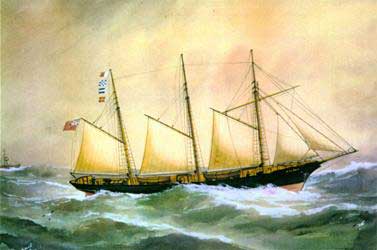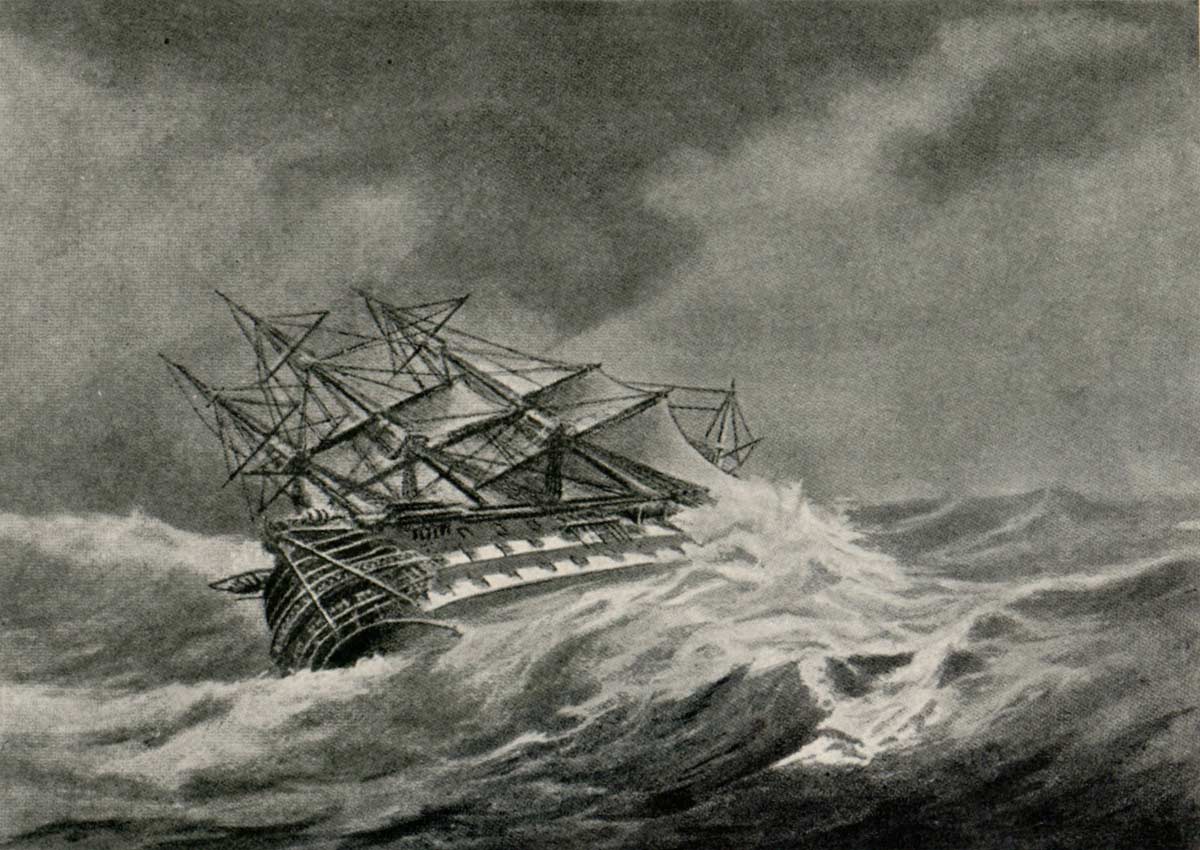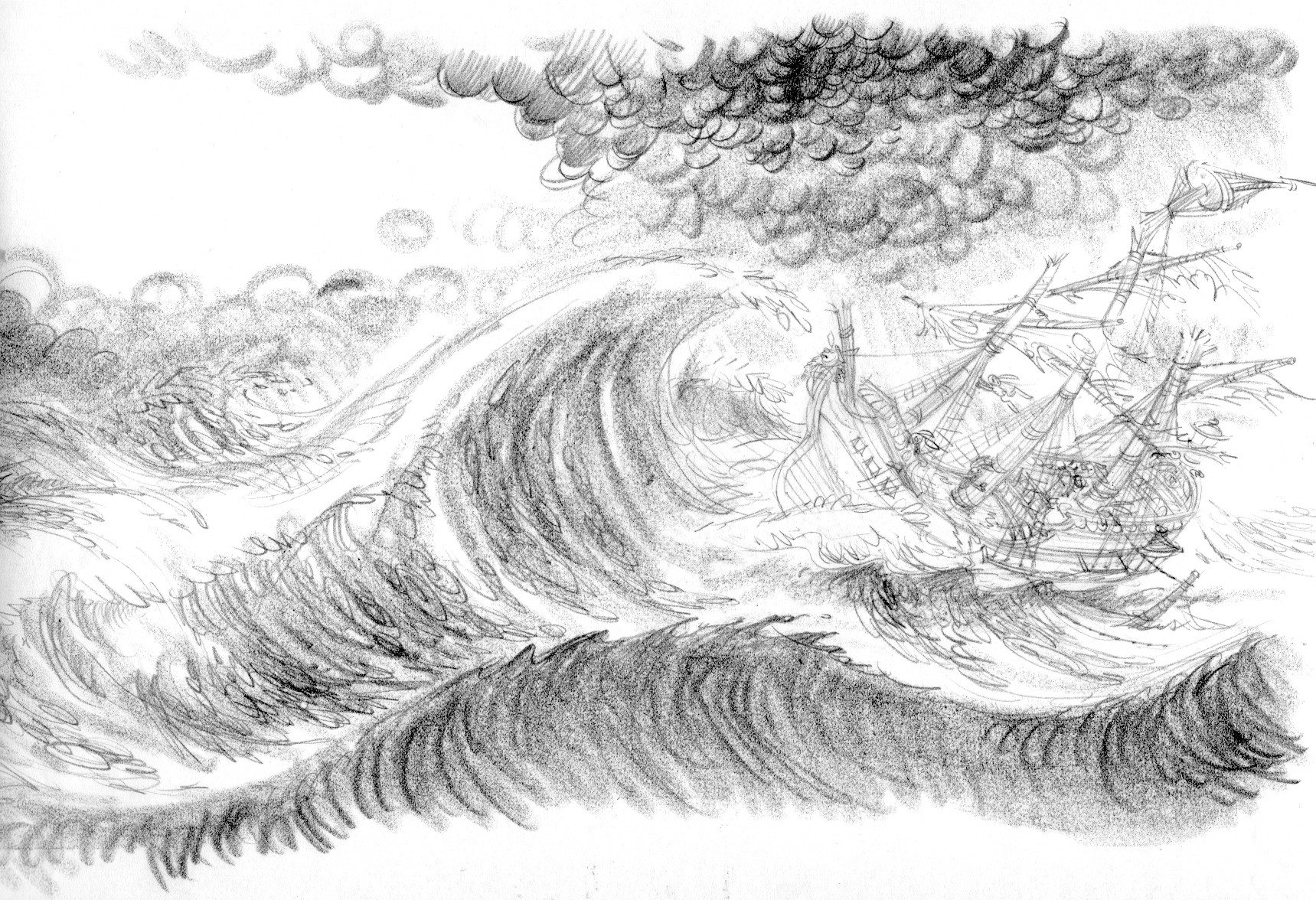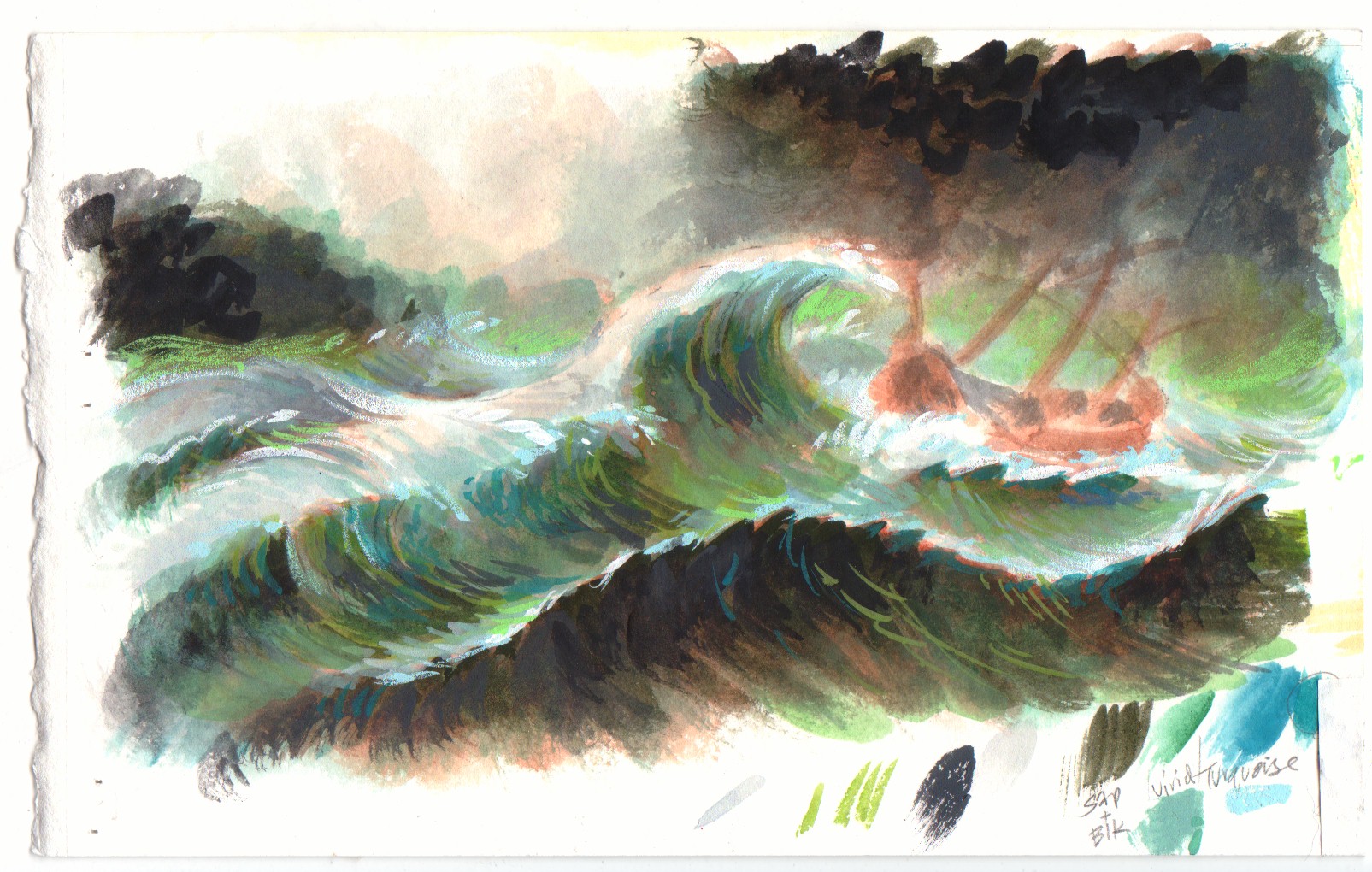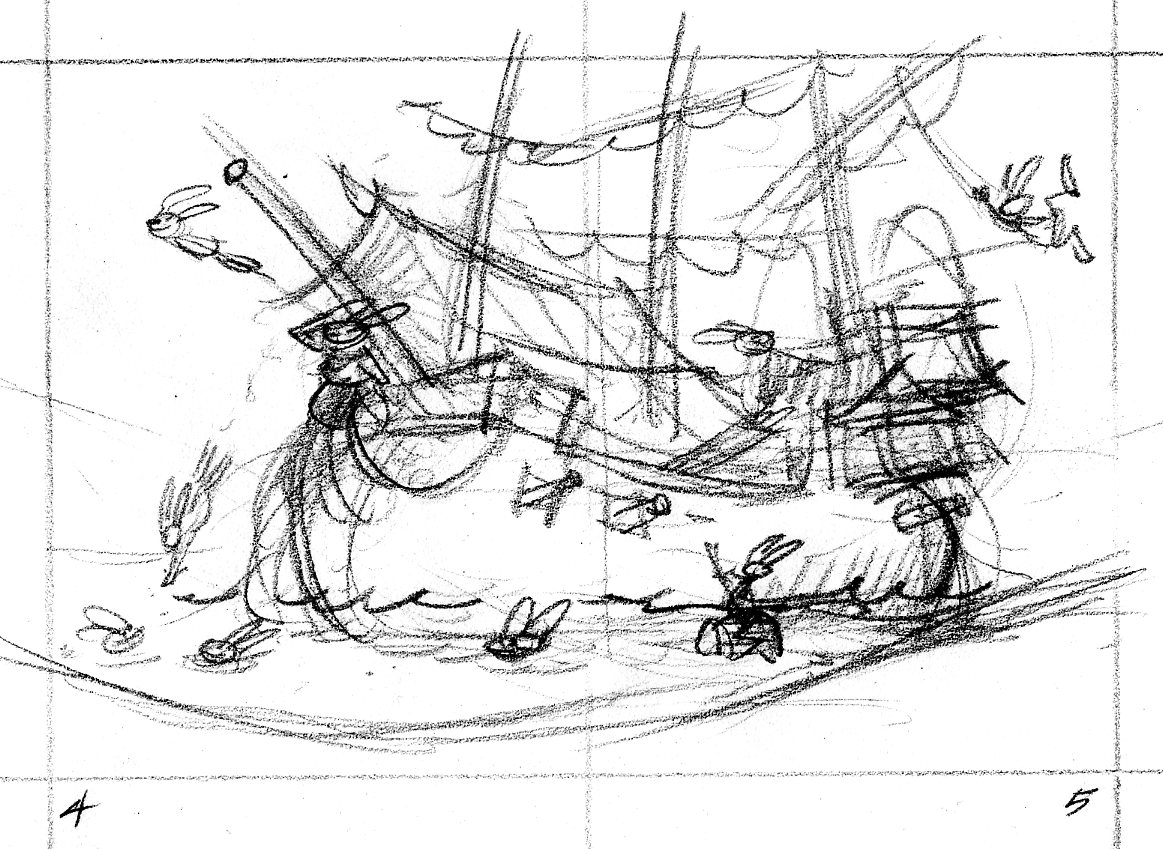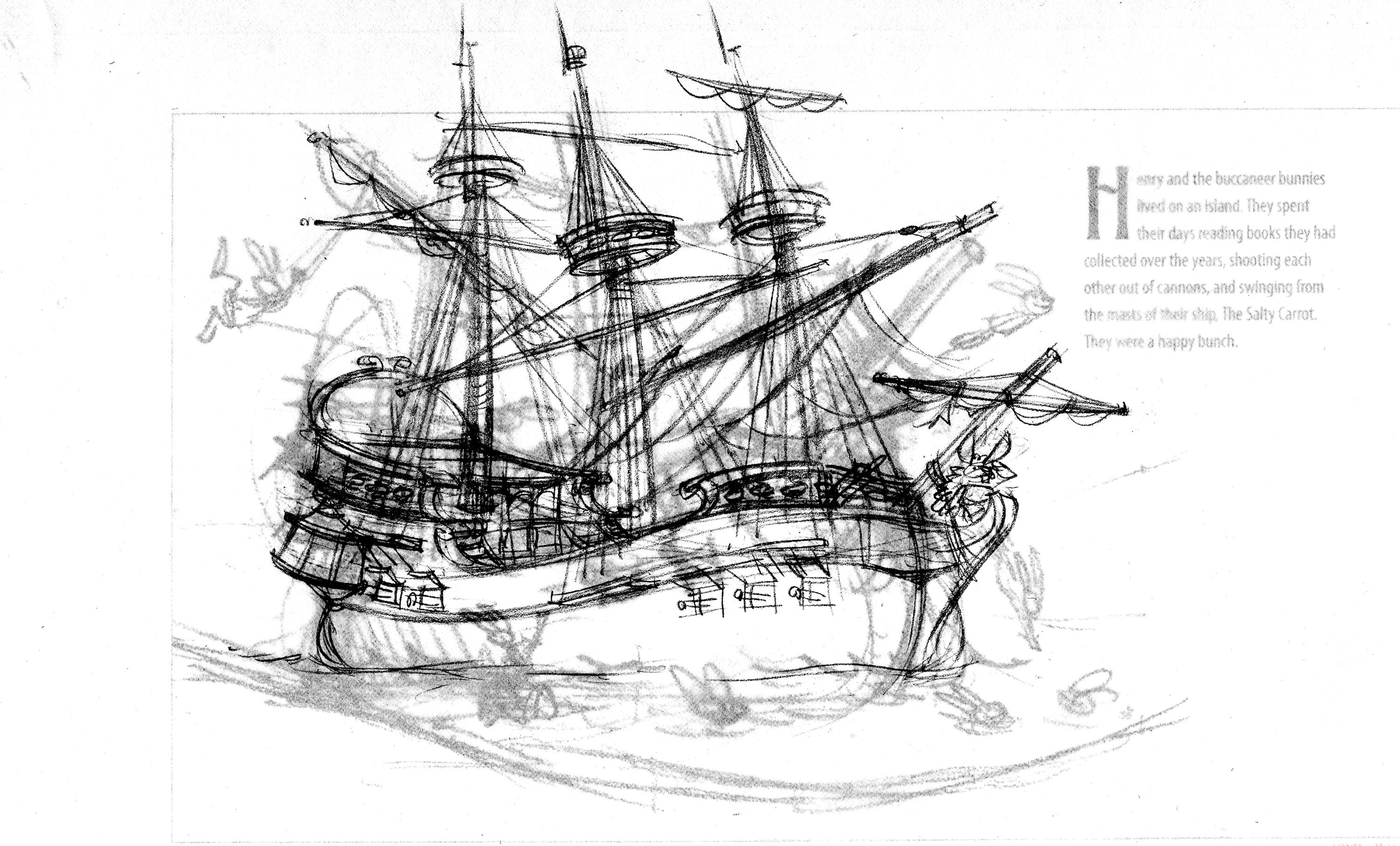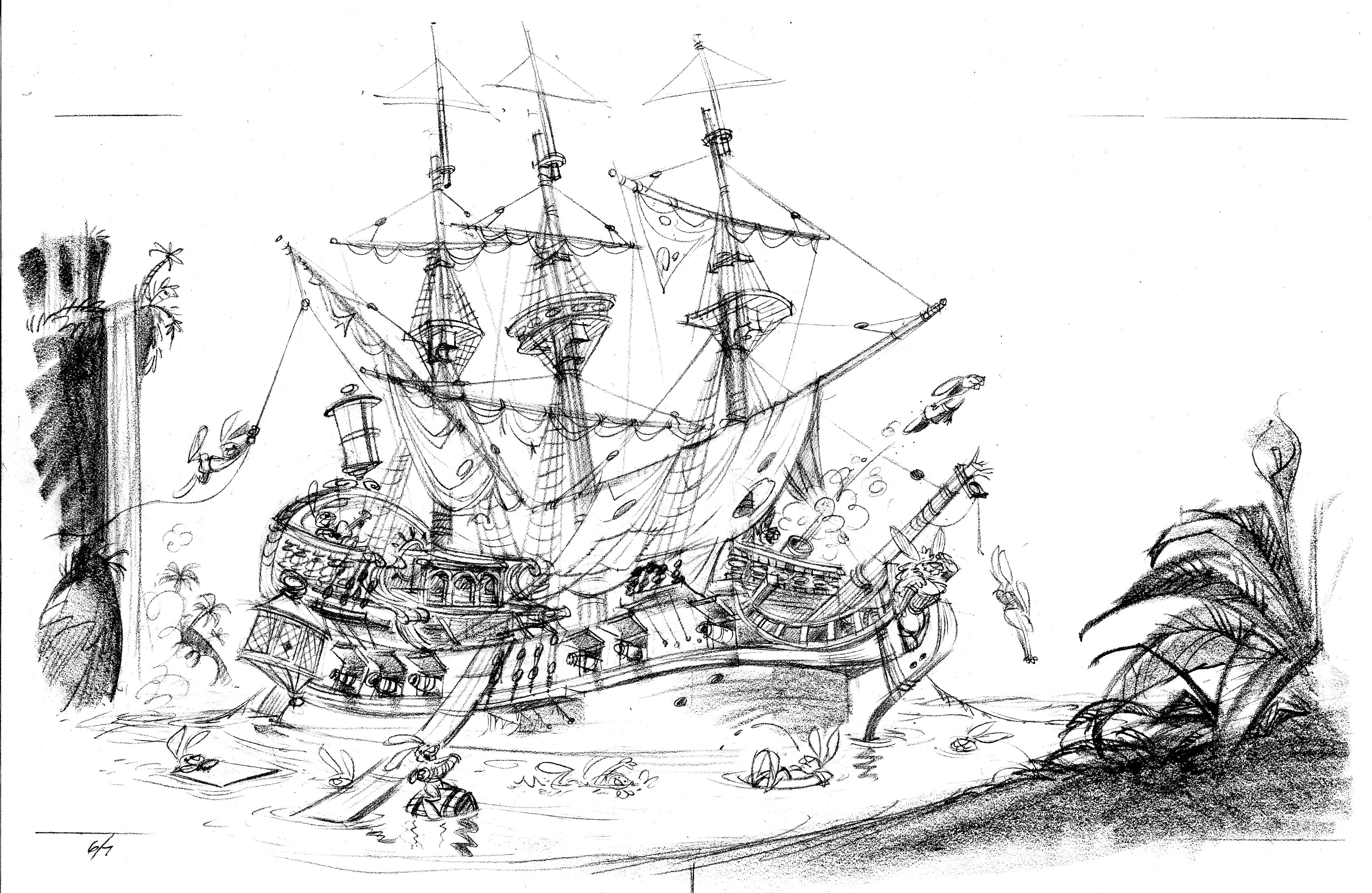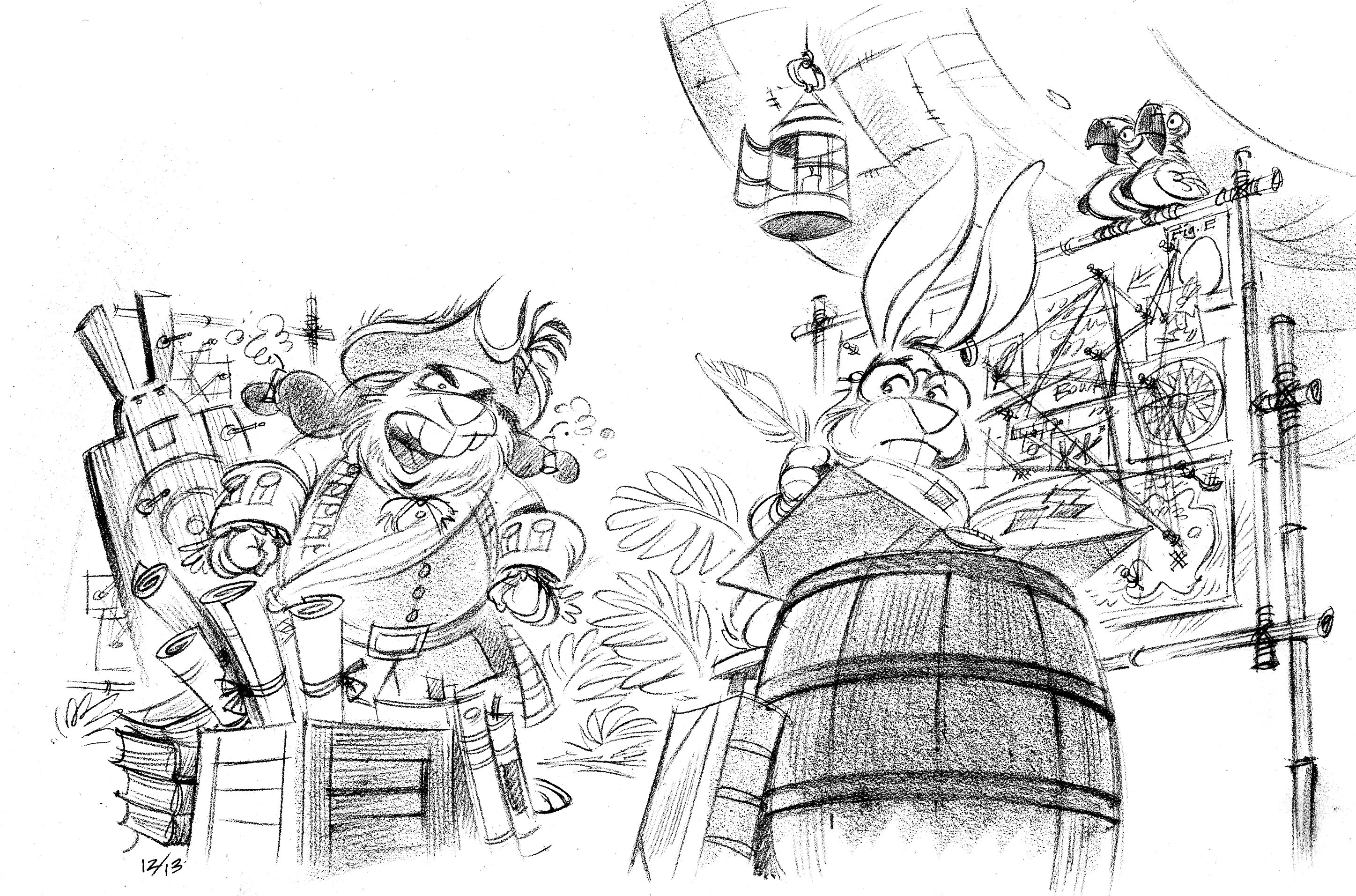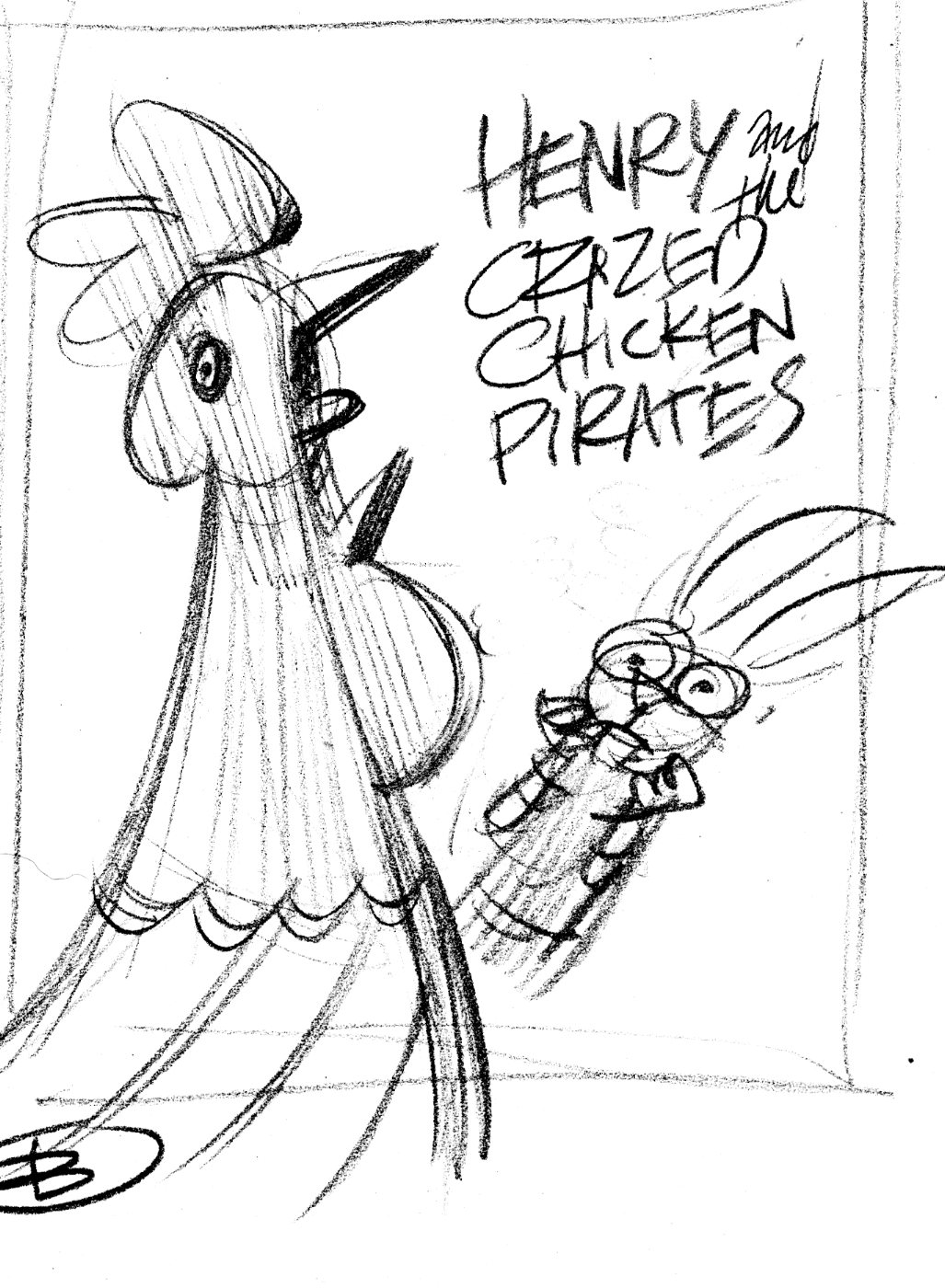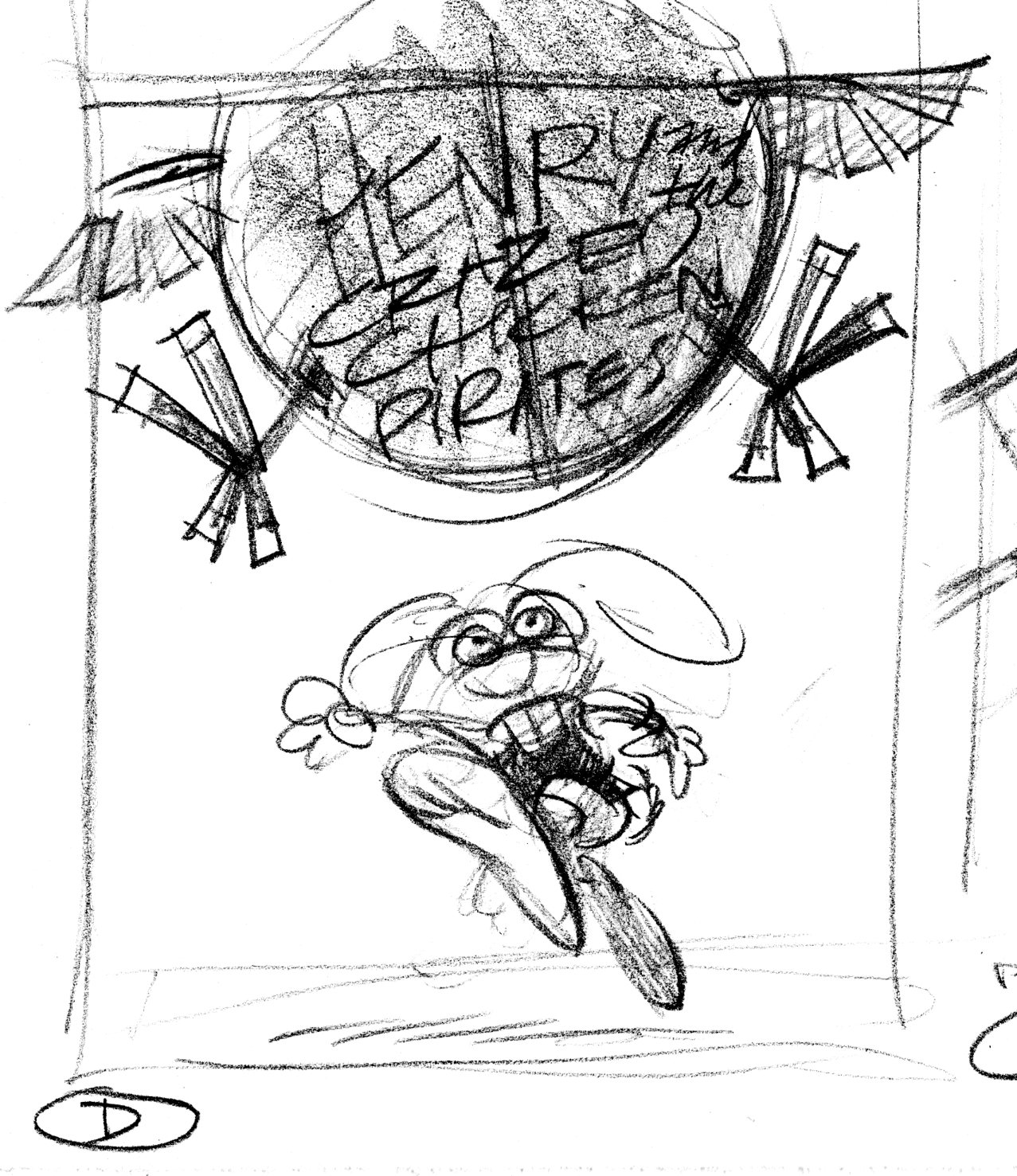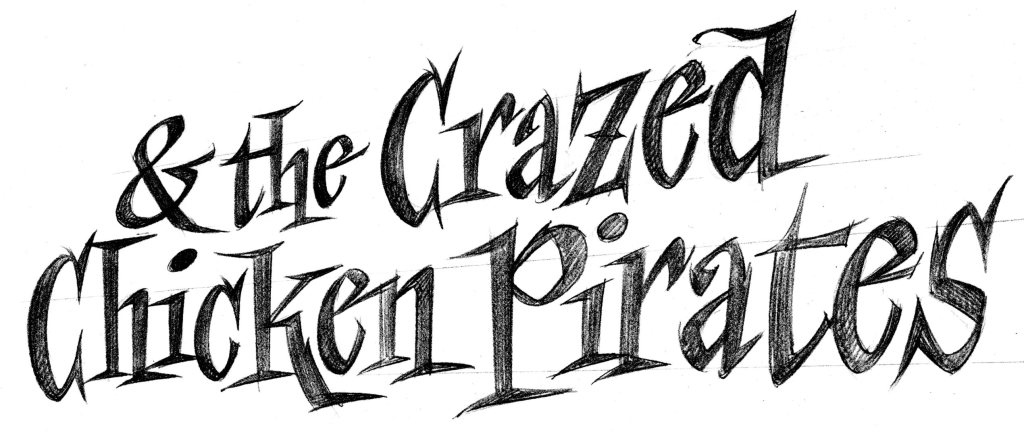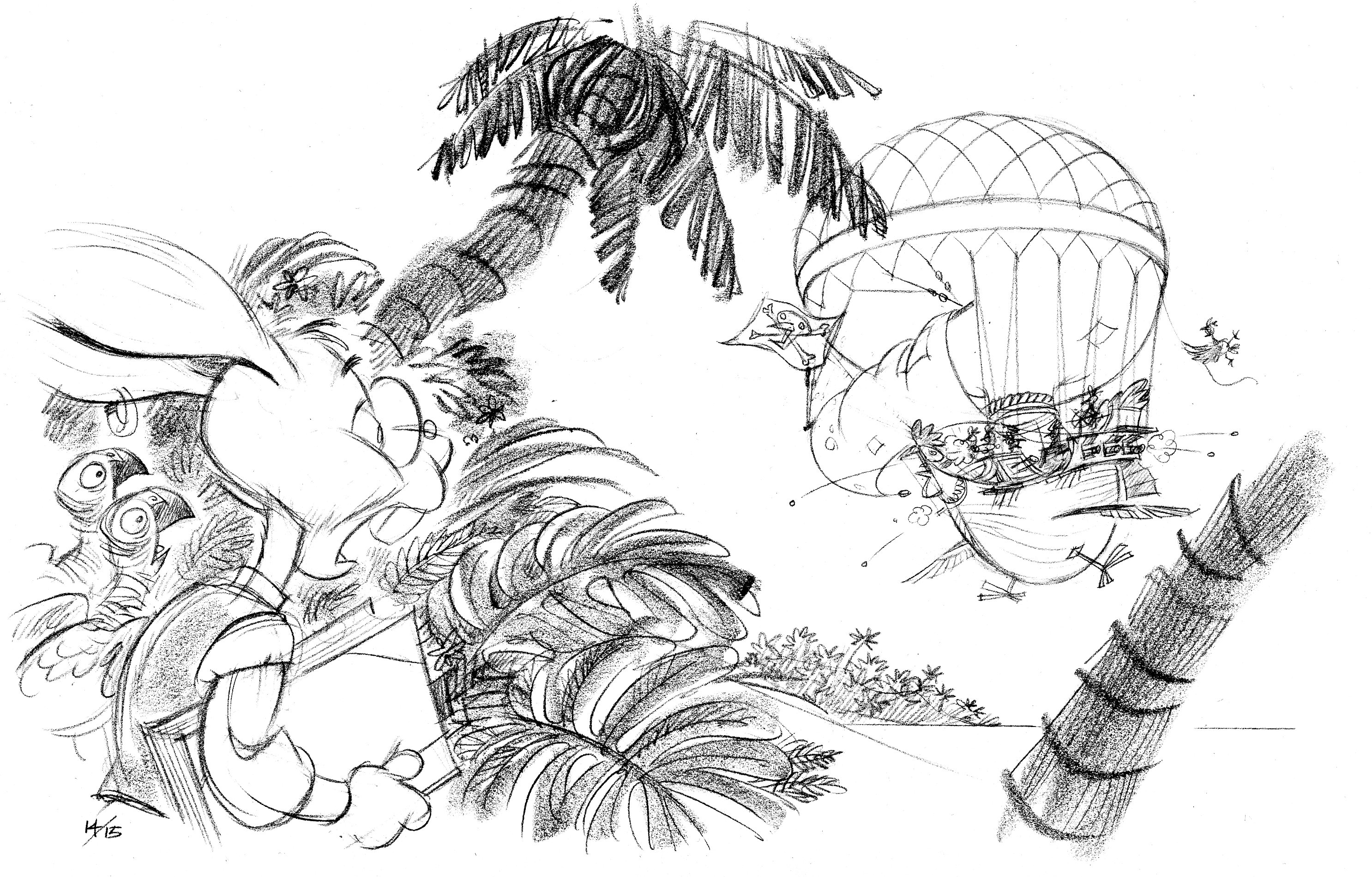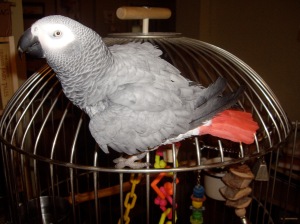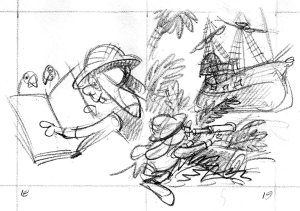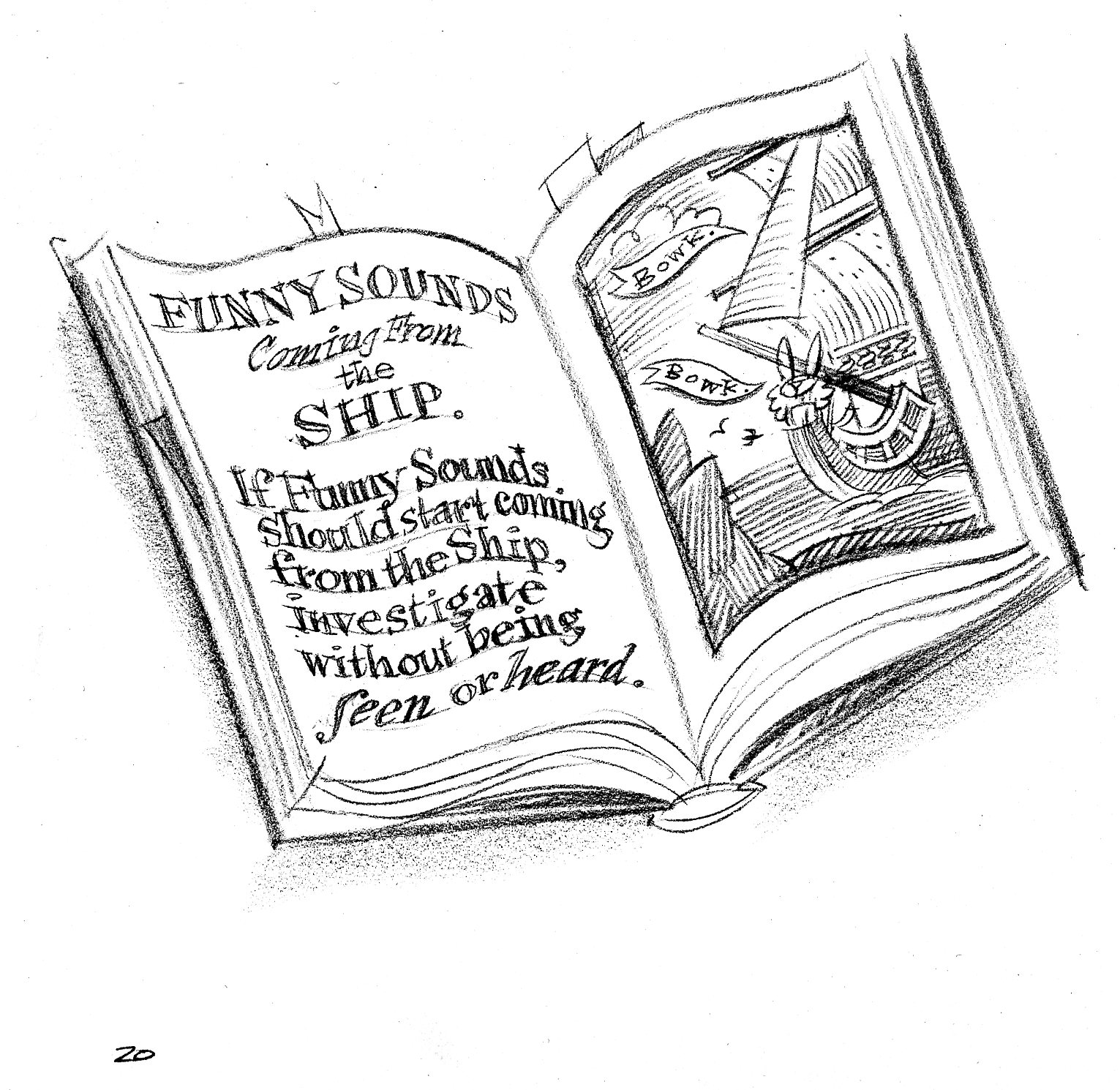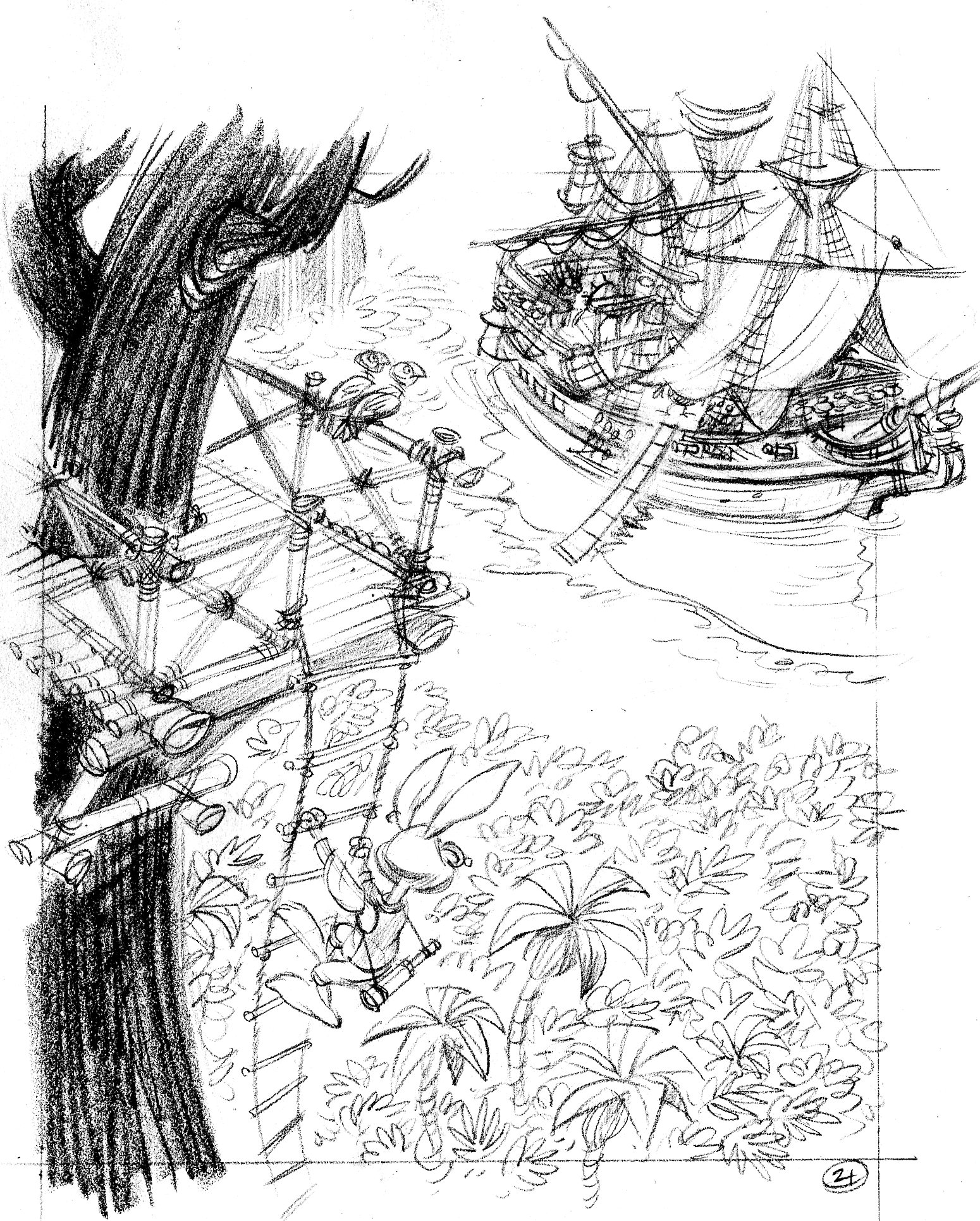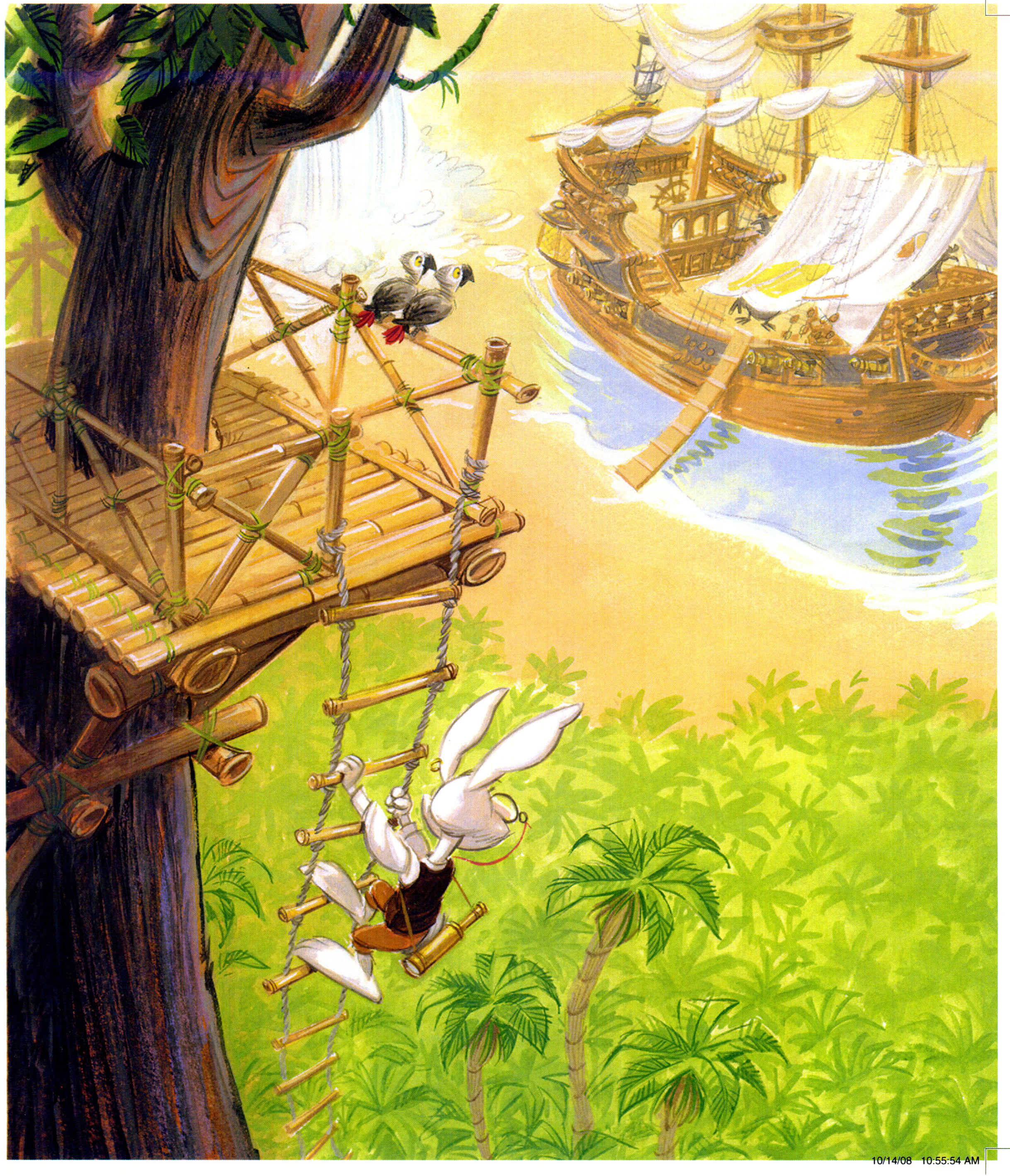For a truly rip-roaring sea-shanty singalong, you can’t beat this old buccaneer bunny favourite. Nautical rabbits have enjoyed this one for centuries, and can oft be heard belting out a chorus in lusty bunny voices (to the tune of Blow the Man Down):
Oh, Buccaneer Bunnies roam o’er the salt seas—
Yo-ho, nibble yer greens!
Our booty be cabbage and carrots and peas—
Wiggle yer ears and nibble yer greens!
Our lives short & merry, our ears long & soft—
Yo-ho, nibble yer greens!
We jump to the ratlines at “All hands aloft!”
Wiggle yer ears and nibble yer greens!
Come cheer up, me bunnies, to glory we sail—
Yo-ho, nibble yer greens!
Wi’ cutlass & pistols and white fluffy tails—
Wiggle yer ears and nibble yer greens!
Our clothes be expensive & jewelry’s dear—
Yo-ho, nibble yer greens!
At two bucks for earrings, that’s one buck an ear—
Wiggle yer ears and nibble yer greens!
So now I ups anchor & bids ye ‘adieu’—
Yo-ho, nibble yer greens!
I’ll drink your sweet health wi’ a flagon or two—
Wiggle yer ears and nibble yer greens!
March has been an incredible month for school visits. For most of them I’ve dressed as a bunny pirate and read Henry and the Buccaneer Bunnies, followed by a painting demonstration. While I paint, we all sing Nibble Yer Greens. A couple of students have asked me where the song came from. The answer is: several places, mostly from sea-shanties sung by 19th-century British sailors.
Blow the Man Down provided the tune and the form for the refrain: ‘Blow the man down’ is imperative—it’s an order. The phrase I needed also had to be imperative, so I came up with ‘nibble yer greens.’ Incidentally, Blow the Man Down was also the inspiration for the SpongeBob SquarePants theme song. Fun fact: Tom Kenny, the voice of SpongeBob, hails from my hometown of Syracuse, New York. It’s rumored the pirate who sings the theme song is a tribute to cartoon show host Salty Sam, a star of local 1960s Syracuse television. I remember Salty Sam well.
Back to Nibble Yer Greens. Some of the lyrics come from Hearts of Oak:
Come cheer up, my lads! ’tis to glory we steer,
To add something more to this wonderful year;
To honour we call you, not press you like slaves,
For who are so free as the sons of the waves?
and Spanish Ladies:
Farewell and adieu to you fair Spanish ladies,
Farewell and adieu to you ladies of Spain,
For we’ve received orders to sail for old England,
And hope with good fortune to see you again.
We’ll rant and we’ll roar, like true British sailors,
We’ll rant and we’ll roar across the salt seas,
Until we strike soundings in the Channel of Old England,
From Ushant to Scilly is thirty-five leagues.
‘A short life & a merry one’ was the motto of Bartholomew Roberts.
The ‘buck an ear’ gag has been around at least since I was a kid. I fleshed out the verse with help from Blood Red Roses:
Our boots and clothes are all in pawn
Go down, you blood red roses, Go down.
And its flamin’ drafty ’round Cape Horn,
Go down, you blood red roses, Go down.
Oh, you pinks and posies,
Go down, you blood red roses, Go down.
And now, adieu—
Let every man here drink up his full bumper,
Let every man here drink up his full glass,
We’ll drink and be jolly and drown melancholy,
And here’s to the health of each true-hearted lass.
ADDENDUM:
Shiver me timbers, I forgot about my reason for writing this post in the first place! Last month I visited Northwestern Elementary School, and was treated to a concert by the Second Grade classes. Each class wrote new lyrics for Nibble Yer Greens—which they sang while their music teacher, Mr Fies, accompanied on the pianoforte.
Additional Words by Northwestern Elementary Second Grade Students
(Ms. Sell’s Class)
One bunny named Henry, who liked to read books.
Yo Ho! Nibble yer greens!
He read about weather and making neat things.
Wiggle yer ears and nibble yer greens!
(Mrs. McCloskey’s Class)
We swab the deck five times, we slipped only once.
Yo Ho! Nibble yer greens!
We climb up the ladders and jump to the sea.
Wiggle yer ears and nibble yer greens!
(Mrs. Bettler’s Class)
The hurricane came to wreck the salty carrot.
Yo Ho! Nibble yer greens!
It sunk all the jewlry, they started to scream
Wiggle yer ears and nibble yer greens!
(Ms. Mizak’s Class)
The Island’s sand is yellow and orange.
Yo Ho! Nibble yer greens!
They built a two-story house, made seaweed stew.
Wiggle yer ears and nibble yer greens!
And now, adieu!—I really mean it this time.


